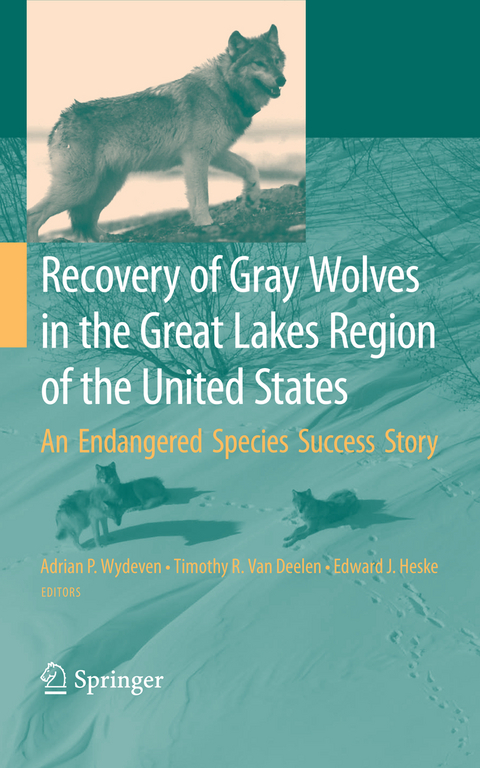
Recovery of Gray Wolves in the Great Lakes Region of the United States
Springer-Verlag New York Inc.
978-1-4419-2763-7 (ISBN)
Early Wolf Research and Conservation in the Great Lakes Region.- Long-term Research on Wolves in the Superior National Forest.- Wolf and Moose Dynamics on Isle Royale.- An Overview of the Legal History and Population Status of Wolves in Minnesota.- Wolf Population Changes in Michigan.- History, Population Growth, and Management of Wolves in Wisconsin.- An Isolated Wolf Population in Central Wisconsin.- Change in Occupied Wolf Habitat in the Northern Great Lakes Region.- Growth Rate and Equilibrium Size of a Recolonizing Wolf Population in the Southern Lake Superior Region.- Prey of Wolves in the Great Lakes Region.- Factors Influencing Homesite Selection by Gray Wolves in Northwestern Wisconsin and East-Central Minnesota.- Dispersal of Gray Wolves in the Great Lakes Region.- Are Wolf-Mediated Trophic Cascades Boosting Biodiversity in the Great Lakes Region?.- Wolves, Roads, and Highway Development.- Taxonomy, Morphology, and Genetics of Wolves in the Great Lakes Region.- Human Dimensions: Public Opinion Research Concerning Wolves in the Great Lakes States of Michigan, Minnesota, and Wisconsin.- Ma’iingan and the Ojibwe.- Wolf–Human Conflicts and Management in Minnesota, Wisconsin, and Michigan.- Education and Outreach Efforts in Support of Wolf Conservation in the Great Lakes Region.- The Role of the Endangered Species Act in Midwest Wolf Recovery.- Wolf Recovery in the Great Lakes Region: What Have We Learned and Where Will We Go Now?.
| Erscheint lt. Verlag | 25.11.2010 |
|---|---|
| Zusatzinfo | XXII, 358 p. |
| Verlagsort | New York, NY |
| Sprache | englisch |
| Maße | 155 x 235 mm |
| Themenwelt | Naturwissenschaften ► Biologie ► Botanik |
| Naturwissenschaften ► Biologie ► Ökologie / Naturschutz | |
| Naturwissenschaften ► Biologie ► Zoologie | |
| Recht / Steuern ► EU / Internationales Recht | |
| ISBN-10 | 1-4419-2763-8 / 1441927638 |
| ISBN-13 | 978-1-4419-2763-7 / 9781441927637 |
| Zustand | Neuware |
| Haben Sie eine Frage zum Produkt? |
aus dem Bereich


